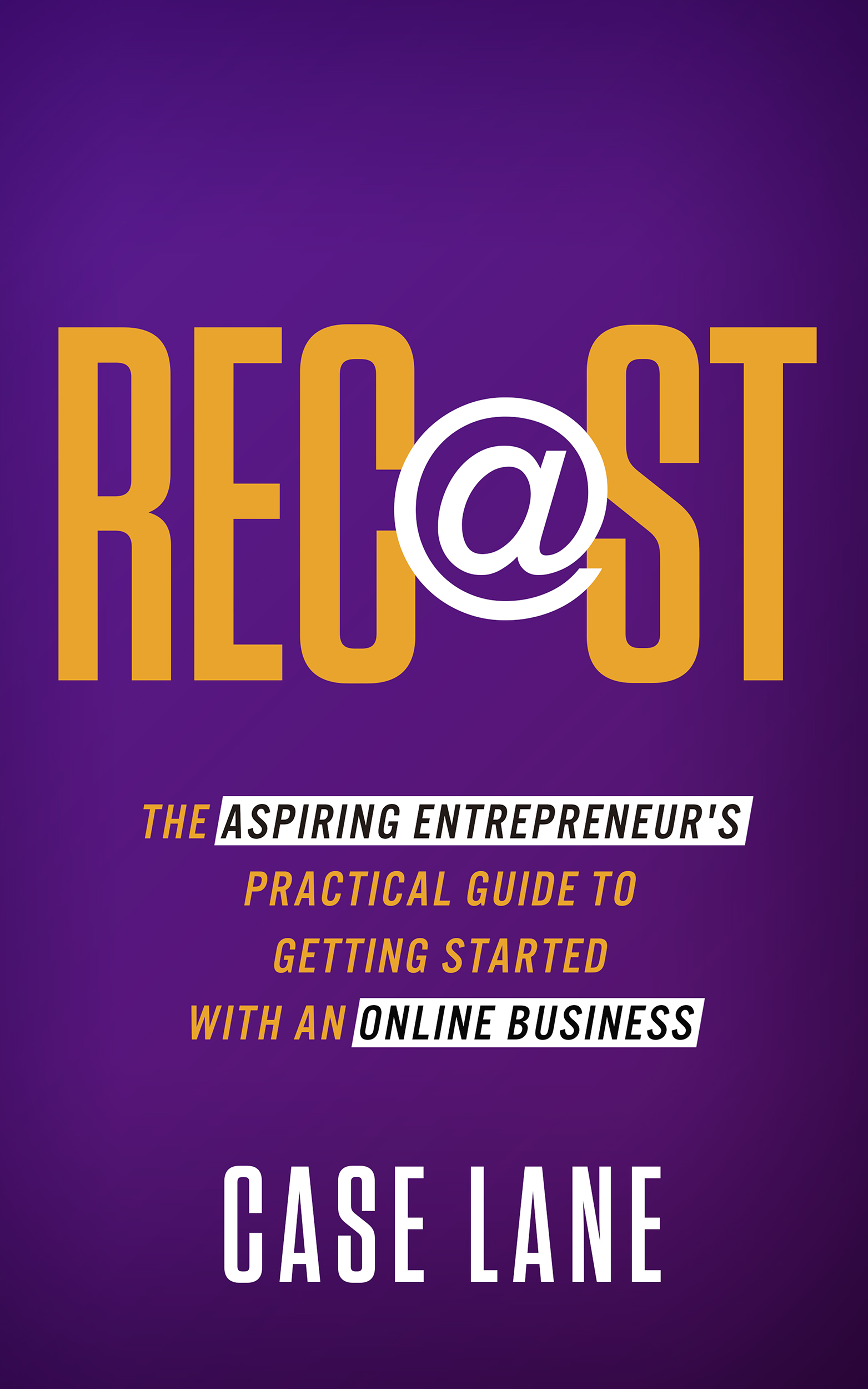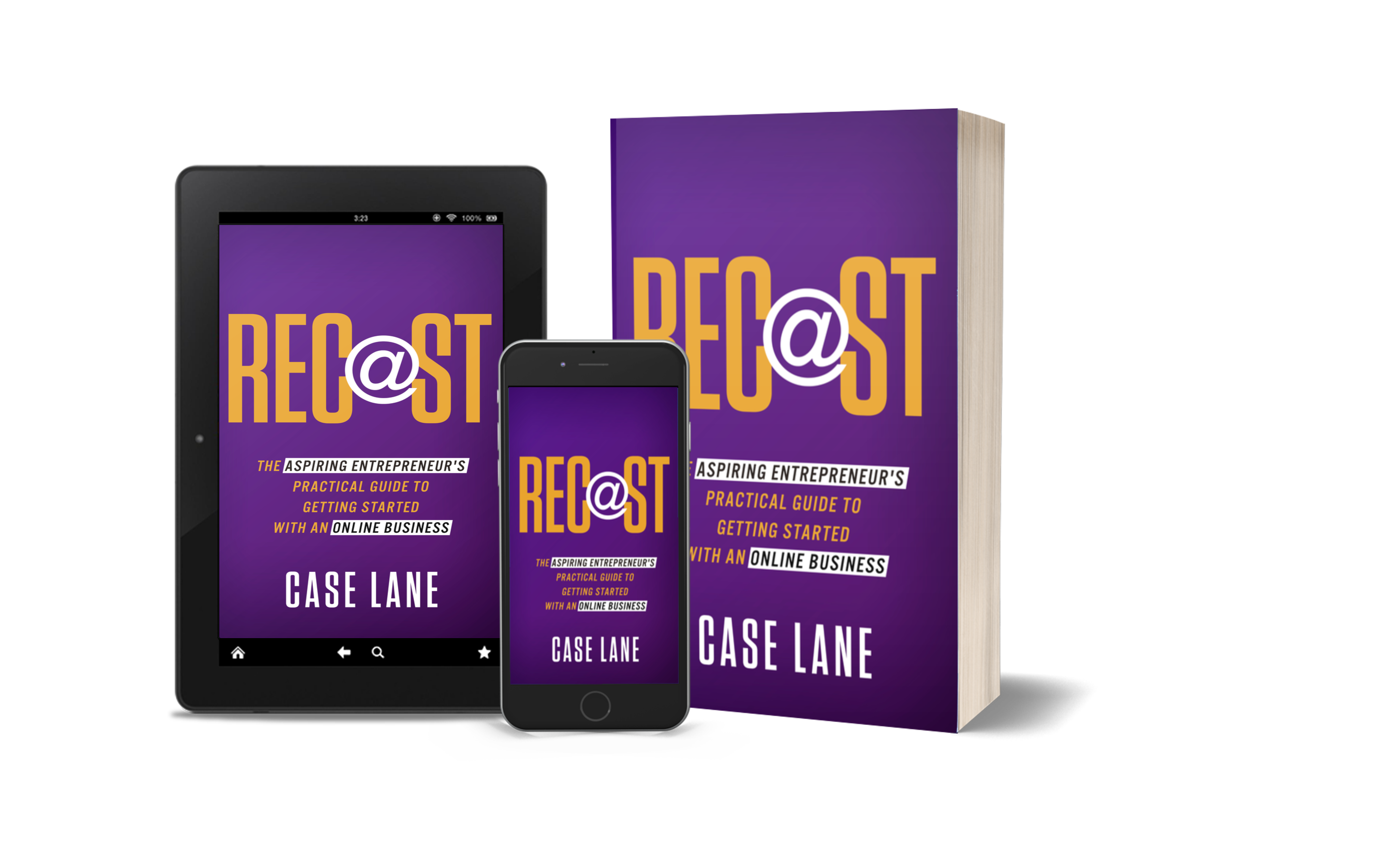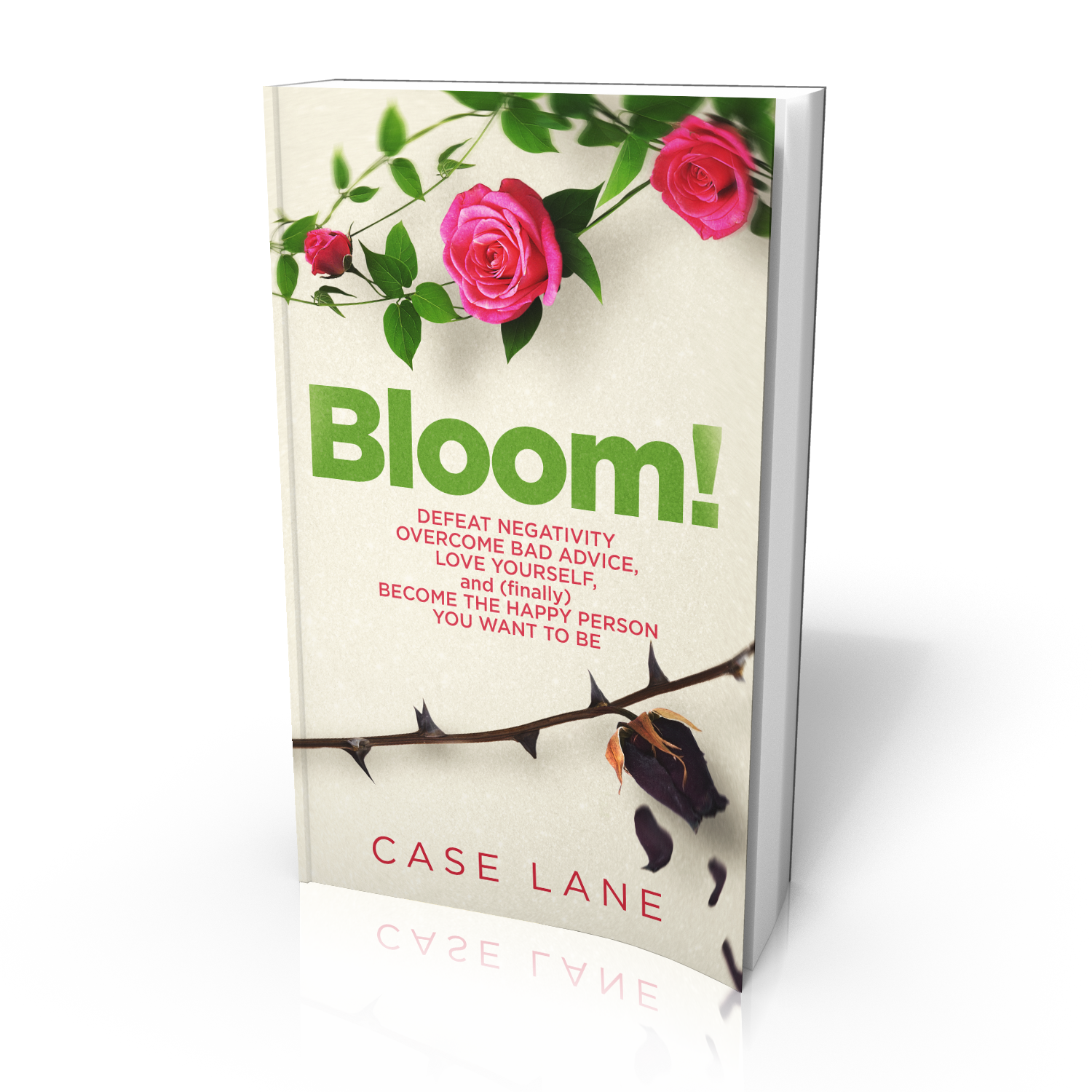Download Recast: The Aspiring Entrepreneur’s Practical Guide to Getting Started with an Online Business
Your First Ten Actions to Take When Getting Started

The TikTok Flip Flop marks a dramatic change for the way online entrepreneurs and the Creator Economy are viewed by government and business.
For everyday society, locked on our digital devices, connected without disruption to the Internet, and easily swayed into ‘scrolling’ away our day, our current functioning is no secret to even passive observers in government, media, education and business.
But they still decided to ban TikTok, only to lead to a backlash which led to the not-ban. Over a year, legislators changed their mind about the threat of the TikTok app, largely due to a recognition of the value of online creators.
But how impactful is the impact?
The traditional industrial world is still in tact. Broadcast television networks still exist. And the functionaries in government still view the world through a 1970s lens. Yet, every now and then we are reminded that the world is changing, and changing fast.
The app is a popular platform for creators who are drawing attention to themselves, products and services by making short form videos. But TikTok is owned by a Chinese company raising alarms about its capabilities from the time it first appeared.
Yet because online creators use the app to earn income, and at the 11th hour, the original decision to ban the app on national security grounds was put on hold to allow time to come up with a plan to keep the app turned on.
Does the TikTok FlipFlop mean that online creators are being taken seriously and the revenue they generate from what was once considered a hobby is actually an important part of the economy that governments must recognize and understand?
On January 20, 2025, an app loaded with videos of dancing grandmas, food concoctions and teenage pranksters received a 75 day reprieve from a total ban in the United States.
The ban, aka Foreign Adversary Controlled Applications Act, was approved generally over fears the app owner’s home country, China, would use the data generated by the app’s use to jeopardize the security of the United States.
The decision to go from national security fears to compromised delay in twelve hours generated many questions, but behind the scenes highlighted a new recognition about the United States’ economy.
Digital creators have a real economic impact that should not be disrupted, even if there are national security concerns.
Wow!
The federal government has decided not to enforce the law banning TikTok until at least April 2025.
But in the statements about extending TikTok’s life, no one citied new evidence about the national security threat, new protections or new controls on the app’s use. There is no announced plan to build defenses against TikTok’s alleged infiltration capabilities. [Disclosure: this blogger writes technothriller novels where the government controls all digital activity through one omnipresent cyber network, and therefore always wonders if there is any possibility the books’ vision will become reality.]
Instead the concern was about the Creator Economy and the thousands of people who earn a living on TikTok.
While the past and current governments champion a return to manufacturing and bring back factories from abroad, you will not find many 20-year olds who are happy to pick up a lunch bucket, punch a time clock and put in their 40 hours a week. You will find plenty who are planning tricks, demonstrations and photo poses that can go on TikTok with the hope of going viral and earning money without leaving home.
Creators drive eyeballs and ears to their videos and posts, and there is value in the numbers. One payment can come from TikTok just from having the numbers who view your post. The other payment comes from brands who pay for placement and promotion. A third revenue stream can eventually come from selling products and services related to the posts.
TikTok itself played a part in getting the message out that the app is a place to make money. The company spent millions on an advertising campaign that showed creators talking about how they use the app for valuable purposes.
All that action, by thousands of people, many who depend on the income, eventually forced the government to take notice and reassess the TikTok ban.
The goal evolved to having TikTok become bought by a U.S. owner, or maybe even the U.S. government, so that it could keep going. Finding a way to keep the income flow became the priority.
Wow again!
When a manufacturing factory is destined to close, sources know exactly how many people will be laid off, the value of their salaries to the local community, and the economic loss to the economy.
That is not the case with TikTok.
Although the company states there are around five million businesses using the app, the IRS and government statistics agencies do not (yet) track the number of people who specifically state that they earn their income on TikTok. But the slow brewing recognition of creators pushing back against the ban was enough for government to decide that rescuing TikTok was a better idea than letting it go.
This is also extraordinary and points to another transformation of understanding for our digital age.
The Creator Economy, tech tools like apps and revenue sources like digital advertising are fast moving, ever evolving and, so far, difficult to classify.
Government is slow, staid and set in its ways.
To track the real economic value of creators, government agencies will need people who know how to identify and label the new sources of work and income. What do you call someone who puts a dinner recipe on fast speed and then sits and eats it on camera?
These employment categories and names do not yet exist and therefore neither does the data. So ironically, the decision to save TikTok was not made on numbers analysis, it was made on…TikTok.
The list of legitimate reasons to ban TikTok definitely reads like the threat list from a future tech spy thriller, yet influence was still able to change the legislators’ minds. Social media influence.
Another crack opened up the once predictable fabric of our structured lives. And a new world understanding opened up for aspiring entrepreneurs.
Creators used their platform to save their income. They may have written letters to Congress too but the most visible symbol of the pushback was on the platform itself.
While mainstream media talked about the proposed ban, creators were not seen being interviewed on Sunday news programs to defend their income. In fact, since most of the most popular creators are wealthy and known for reasons mainstream media does not understand, the news would have a difficult time deciding who would be the best, and safest, spokesperson for the industry.
The industry after all is disparate by choice and practicality, that’s what makes it valuable. Creators are providing niche entertainment for millions who have individual tastes and interests.
The ten wealthiest earners on TikTok do not have any of the name recognition of the highest paid movie star, a Super Bowl winning quarterback or even a broadcast talk show host. Despite the millions of views, they are not considered mainstream. But yet, they have influence, and so does their audience.
And that has changed the making and implementation of legislation, irrevocably.
Going forward, and looking beyond TikTok, the role of social media influencers will continue to grow. Constant reports about ‘cord cutting’ indicates a move to streaming entertainment online where traditional broadcast television shows now sit next to attention getting content on social media apps.
Traditional television broadcasting is still a $75 billion dollar a year enterprise, that’s a lot of brand sponsorship money that has yet to find its way to influencers targeting niches. Since broadcasters have to go for the large audience, and influencers can get by on a few thousand a month, the revenue gap between the two will remain large.
The current legal reprieve should also not be considered a win. The law passed and was upheld by the courts. TikTok is not available in app stores, only existing users still have it. And all new apps from China or any other country considered a ‘foreign adversary’ face the same law and may be forced to divest of its U.S. business.
TikTok may also not survive if it is bought by owners who current users do not like or who impose policies that users reject. This may instigate a fall in the value of the platform because popular users will leave for other apps. In fact during the ban discussion, users already started to move, including ironically to another Chinese-owned app.
Within any app available, influencers will continue to cultivate those targeted dollars, and be comfortable supporting their family with self-generated content, leaving government with no choice but to ensure legislation promotes, not disrupts, their revenue stream.
The TikTok Flip Flop is ultimately saying that the government recognizes there is a Creator Economy, the Creator Economy allows thousands of people to earn their own income online, these influencers are strong and have a platform they can use, and it is not in the economy’s best interest to shut them down.
Triple Wow!!!
If you are an aspiring entrepreneur who has been sitting on the fence about starting your own online business, the TikTok Flip Flop should be your wake-up call.
The Creator Economy is real. Money is being made and even the government wants to support it regardless of the potential threat.
You too can be like those influencers who stood up for the platform by pointing out that they are supporting a family, paying their mortgage or saving for college with the money they make on TikTok.
And they are making money on the other platforms too. They are also sponsoring related products and building digital and service businesses. All part of securing their own future by entrepreneurial activities and using the tools at their disposal.
The door is open to anyone who will take the time to get the work done. And the way forward is loaded with a new recognition of the impact you have, and the opportunity you create by being on the side of the creators.
Are we still absorbing the rise of the iPhone and the omnipresence of the Internet? No.
Is the transformation from the industrial to the digital age on a fast track driven by A.I. and the establishment of the Creator Economy? Yes.
We do not know what will eventually happen with TikTok. But we do know that the opportunity online is real, and if you are watching it happen, it’s time to jump in and take your piece of the pie.
Category: Impact of Technology, Online Business, Online platforms, Social Media, Social Media Influencer, Strategies for Aspiring Entrepreneurs, Strategies for New Entrepreneurs, Technology Tools
Tags: Creator Economy, economic impact, entrepreneur advice, ENTREPRENEURSHIP, online business, online creator, online entrepreneur, online entrepreneurship, online impact, TikTok




Copyright © 2025 · All Rights Reserved · Ready Entrepreneur